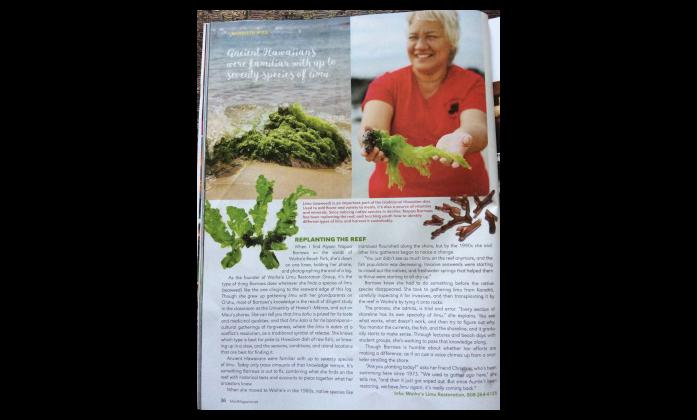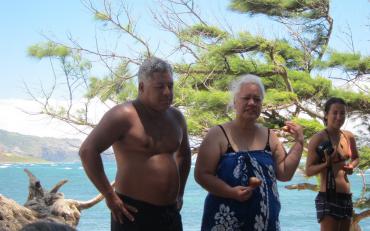By Alyson Napua Barrows. To increase the fish population on the reef at Waihe’e, Maui, Hawaii, an effort was made to increase, revive, restore and replant Native Hawaiian Limu (HNL), called seaweed, to the reef. The plant needs both salinity and fresh water to exist. The idea came about at a class where undergraduate students were brought in to speak on an alien and invasive algae removal project which was on-going in Waikiki. This triggered the Hawaiian cultural perspective of “when you remove something you must replace it with something else” and the idea to plant Hawaii Native Limu was born.
Efforts lead to reviving, restoring and replanting Hawaii Native Limu as well as support for the efforts to release water to the Iao Stream, Wai’ehu Stream, and Waihe’e Stream. These efforts were rewarded with the court ruling in favour of the project.
Knowledge was sought from the Elders, within the family circles, Hawaiian Communities, those living in the area as well as online on the topic of Limu and other plants growing at the Waihe’e reef. Contacts were also made with Dr. Isabelle Aiona Abbott, who became an important influencer for the project.
At the University of Hawaii, Manoa, Dr. Pauline Chinn opened the class to non-classroom teachers who acted as resource teachers and taught in the Hawaiian Study Program under the title of Kupuna (Elder) Component. Dr. Chinn saw the need to have Hawaiian Cultural person(s) on her team in conducting further project like “Malama I ka ʻAina” Take care of the Land. These inputs all led to the formation of the not-for-profit organization Waihe’e Limu Restoration.

A ‘free swim survey’ was conducted of the reef to identify what HNL are still to be found on the reef, identifying the freshwater source, monitoring water quality, fish count of various species and looking at laws to protect HNL.
Maui Ocean Center extended an invitation to Waihe’e Limu Restoration to collaborate efforts with the ICBF on Maui and the IUCN on Oahu to address Indigenous conservation and sustainability – research is ongoing.
All photos ©Alyson Napua Barrows
**
This story was submitted by Alyson Napua Barrows, in response to IUCN's Water Flows Story competition - more here.
